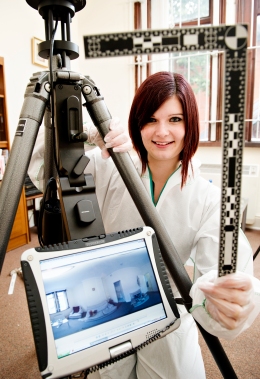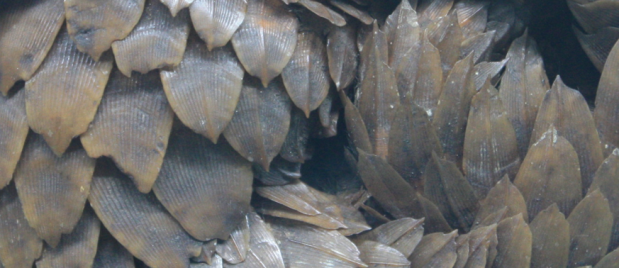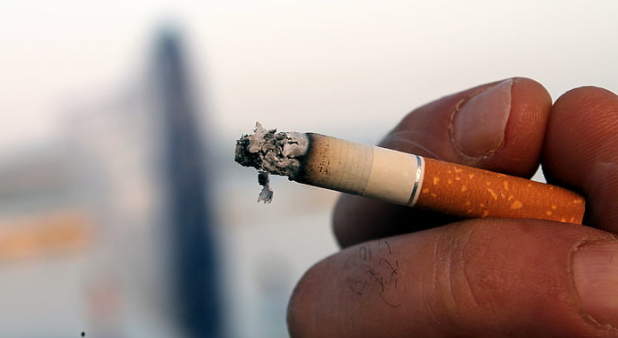
Dr Kayleigh Sheppard works as a lecturer in forensic science at Liverpool John Moores University.
What is your current job role and what does this entail?
I currently work as a lecturer in Forensic Science at Liverpool John Moores University. My role is divided between lecturing undergraduate and postgraduate students, supervising undergraduate and MSc research projects and conducting research. I teach students across a range of undergraduate courses including BSc Forensic Science, BSc Forensic Anthropology and BSc Policing with Forensics, as well as postgraduate students on the MSc Forensic Bioscience course. Across these courses, I deliver a range of lectures and practical sessions focusing on topics such as Crime Scene Investigation and Forensic Methods with a particular focus on the photography of crime scenes and the evidence contained within them. Photography techniques covered include crime scene photography using natural light and flash, and more advanced photographic methods such as oblique lighting, alternate light source photography and automated 360◦ photography. I introduce the topics and theoretical principles of each topic to the students through lectures and workshops and then give the students hands on experience and the opportunity to develop their practical skills for each of the techniques through practical classes.
The practical classes delivered consist of fingermark enhancement, recovery and comparison, footwear mark recovery, evidence packaging techniques and crime scene documentation and photography. In addition, the students put together everything they have learnt throughout the semester and demonstrate their crime scene investigation techniques using simulated crime scenes that we are able to mock up within our crime scene houses. I supervise a range of student projects at both undergraduate and masters level which investigate advanced photographic methods of crime scenes, using 360-degree photography or mobile technology.
What initially attracted you to your particular field of research?
I have always had an interest and passion for the sciences, particularly biology and chemistry and knew that my future career would be in a scientific field. Whilst at school I was a keen problem solver and enjoyed reading crime and true crime novels. The combination of these traits led me to investigate a potential career in forensic science and so I started my BSc in Forensic Science at Staffordshire University. Throughout the course I was particularly interested in the crime scene aspects and envisaged myself going on to work as a crime scene investigator in the future. Upon completion of my course I had the opportunity to undertake a placement with Staffordshire Police. The placement allowed me to put my knowledge from my degree into practice, alongside crime scene investigators, whilst also providing me with the opportunity to conduct a research project. This project focused on my interest in crime scene investigations whilst incorporating emerging technologies- another interest of mine. The project was entitled “Next generation crime scene recording and forensic data use within criminal investigations”. The project was so well received by the Forensic staff that I wanted to pursue this area further and applied for a PhD investigating the use of 360-degree panoramic photography in a forensic context at Staffordshire University.
Alongside my PhD I was able to teach undergraduate students, introduce them to 360◦ camera technology, and provide them with hands on experience using the technology. The ability to apply my research into the curriculum to enhance the students learning sparked my interest in academia. An academic position provides the best of both worlds, allowing me to pass on my knowledge and experience to the students and teach them about forensic science, whilst also allowing me to continue to pursue my own research avenues. It is very rewarding to teach the students about modern and emerging technologies to assist with criminal investigations and to see their enthusiasm about a topic they may not have been introduced to before. The best part about being a lecturer is having the ability to teach students about topics they are unfamiliar with and pass on that knowledge. The most gratifying part of my job is when a student does not understand a topic or does not enjoy it, but through explanation and discussion using different learning techniques, the students understand the topic and begin to enjoy it.
Can you tell us about the research you’re currently involved in?
Most of the research that I conduct investigates the use of 360◦ panoramic photography for documenting and presenting crime scenes. At first, the research sought to validate the technique, regarding its accuracy for taking measurements at a scene. The research has begun to adapt the technology to answer specific research questions, which may aid crime scene investigators at the crime scene, by adapting the technology to make it do something that it could not do before. For example, the 360◦ camera has been adapted to include alternate light sources for the detection of biological fluids, which are invisible to the naked eye, to simultaneously detect and document them in situ at a crime scene. Further research has also looked into the extent to which modern technologies for documenting crime scenes have been utilised for the presentation of evidence in the courtrooms and the factors that may be affecting the use in courtrooms.
The use of alternate light sources has also branched into other research avenues within the forensic field. Current research being conducted investigates the importance of cleanliness and prevention of cross contamination within Sexual Assault Referral Centres (SARC). The issues with identifying contamination in SARC environments is that in order to ensure cleanliness, the contaminants would ideally be visible. Many biological fluids are invisible to the naked eye and therefore we cannot see them – so how do we know whether they are present on a surface or not? Most biological fluids fluoresce under specific wavelengths of light and enable them to be visualised. Research currently being conducted is seeking to determine the effectiveness of a SARCS-LED light source (CopperTree Forensics Ltd.) for identifying human blood, semen, saliva and vaginal secretions in small volumes (less than 1 μl) on a variety of surfaces typically encountered in SARC facilities. A SARCS-LED enables staff to ‘see’ biological traces, so provides a more targeted forensic clean. This layered approach alongside current ATP testing, and improved cleaning methods, can help to deliver a more thorough service. Using such a light source to identify biological fluids or contamination should enable a more effective cleaning protocol to be employed within SARC facilities, providing a more robust anti-contamination process which is in line with the Forensic Regulator expectations.

Semen and vaginal secretions deposited onto a white vinyl surface. Left – observed under natural light and the biological fluids are not visible to the naked eye. Right – observed under a blue SARCS-LED (445 nm wavelength) and demonstrating biological fluid fluorescence.
What are some of the biggest challenges in your area of research?
Academia can be a challenging place to work and trying to make sure that you maintain the knowledge of the forensic science field whilst it is continually updating can be challenging and often involves lots of reading to stay current, as well as attending training courses and conferences. High profile criminal court cases in forensic science are particularly interesting as they demonstrate to the students the importance and real world impact of their degree and the work they will be conducting in the field, so it is important to stay on top of these as well. At such an early stage in my academic career, being only 26, I felt as if there was a lot of pressure to prove myself worthy. As a result, I take advantage of every opportunity that is presented to me to further my knowledge and experience. It can be challenging to maintain a balance of lecturing, creating engaging and interesting sessions for the students, whilst continuing to conduct research and publish within the field. What keeps me going is my passion and enthusiasm for the subject area and the fact that I can shape the minds of the future.
Finally, do you have any advice for young scientists eager to pursue a career in your field of work?
For any individuals who want to pursue a career as a forensic scientist and get involved with any area of forensic science, make sure that you know what to expect. If you are simply going into this field because of your love for CSI: Crime Scene Investigation on the television that is not enough. The field of forensic science is not always as glamourous as it is often portrayed in the media, and some of the analysis techniques are not always conducted at the drop of a hat. However, saying that, forensic science is such an interesting and exciting field that is constantly evolving – no two days will ever be the same.
If you are interested in pursuing a career in this area you will need to make yourself stand out from the crowd. Over the past few years, this is a field which has become extremely competitive and you need to be able to demonstrate that you are a more suitable candidate than everyone else – what makes you different, what makes you stand out? In order to do this I would highly recommend getting any work experience that you can within the area. Working within criminal investigations can be tricky with active casework, but you do not know unless you ask. Some universities have partnerships with the local police forces so make sure to take advantage of any opportunities they can offer you. If this is not possible, try to get experience in laboratories to demonstrate your ability to follow protocols, work to standard operating procedures and avoid contamination. Alternatively, you could volunteer as a special constable within the police or assist within other police departments. Many of the skills that you obtain from these experiences can be transferred into the forensic field and more importantly demonstrates your commitment to enhancing your knowledge and skill set.
Website: LJMU Kayleigh Sheppard
Twitter: @Kay_Sheppard1










